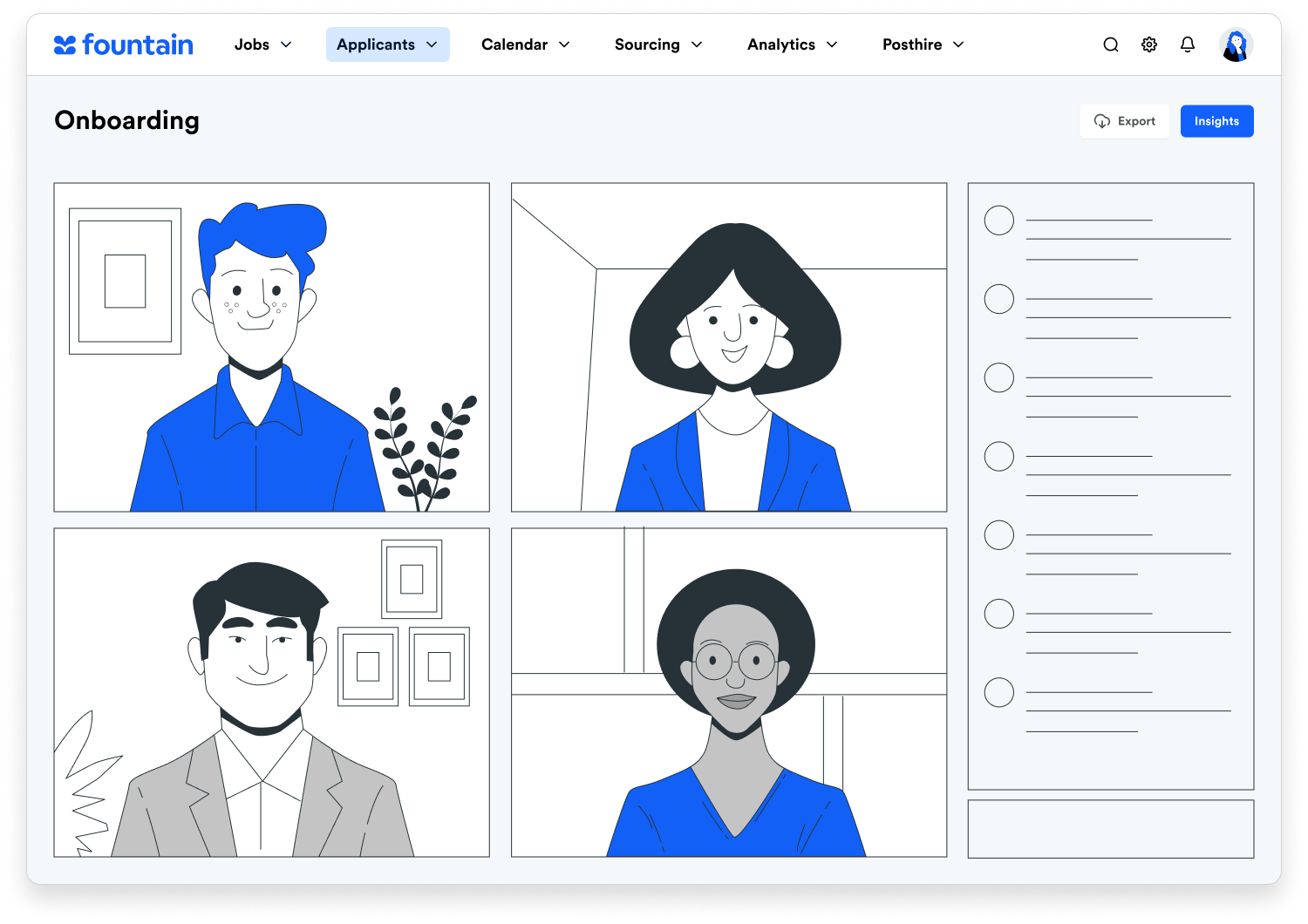Recruiting, hiring, and retaining the right people, at the right time, is essential to the success of your business. In order to run an effective hiring process, you first need to look at the type of recruiting you are doing. At a high level, you are recruiting two types of workers: high volume or corporate. It’s important to understand their key differences, and how your process is going to change depending on which one you’re hiring.
What is high volume recruiting?
High-volume recruiting (also known as “hourly recruiting”) involves recruiting and hiring applicants for a large number of open positions, within a short time frame.
Spanning a wide range of industries, a few examples of hourly workers include a cashier, grocery delivery driver, restaurant server, truck driver, etc. These are jobs that require less prior experience, and these workers are also more likely to work multiple jobs at once.
High volume recruiting vs. corporate recruiting
High volume recruiting is focused on a different type of candidate than corporate recruiting. A corporate employee is anyone who is salaried and hired to perform a specialized function within a company. This can range anywhere from an Account Executive to a Director of Engineering.
More key differences between corporate and high volume hiring.

Which industries rely on high volume recruiting?
The following industries might rely on high volume recruiting to get roles filled, which may include the roles listed next to each industry:
- Retail—Sales Associates, Sales Supervisors, Shoppers, Store Assistants, Merchandisers
- Food and restaurants—Baristas, Kitchen Managers, Banquet Staff Servers, Cooks, Dishwashers, Food Service Managers
- Delivery services—Couriers, Messengers, Delivery Drivers
- Manufacturing—Assembly Line Operators, Print Operators, Warehouse Associates
- Logistics—Dispatchers, Forklift Operators, Warehouse Associates, Inventory Technicians
- Healthcare—Care Assistant, Community Health Worker, Home Health Aide
- Hospitality—Event Staff, Lifeguards, Facilities Manager, Baggage Porters, Concierge, Receptionists, Tour Agents
- Professional and business services—Call Center Agents, Client Service Representatives, Cleaning Supervisors, Custodians, Janitors, Security Guards
Read more about what kinds of organizations could benefit from high volume recruiting.
The high volume recruitment process
High volume recruiting is all about efficiency. Because individuals seeking hourly positions are typically applying for multiple positions, you need to move quickly on strong candidates.
It starts with the application
Regardless of the type of hiring you are going to be doing, both will start with an application.
While in corporate recruiting, you are going to want a lot of information up front to be able to perform an in-depth vetting process.
With hourly, you’ll require significantly less information. Most workers in this segment don’t have a resume, or it’s not applicable to the role. This is a high volume segment, where most of your efforts in the application stage should be around reducing the friction between the application and getting the applicants in the pipeline.
Consider alternatives to the traditional application process. Text-to-apply is becoming increasingly popular in the hourly recruiting space, with texts having a 98% open rate, compared to email at a 22% open rate. With most hourly job seekers looking for jobs at multiple companies at the same time, instituting this change will dramatically increase the number of candidates you’re able to get into your pipeline.
Now that you’ve determined this is a viable candidate, it’s time to further qualify them.
Interviewing candidates
You now have a candidate in the pipeline. What are you looking for, and how are you vetting for it?
For a corporate position, you’re going to have multiple stages and multiple stakeholders involved in the decision-making process. Candidates might go through three or more rounds of interviews, with that number increasing for more technical positions.
With hourly recruiting, you take a different approach. This is going to be more of a checklist of qualifications. Whether it’s certifications, car availability, or licensing, it really depends on the type of work they will be doing.

Making your selection: Are you assessing or selling?
When in the final stages of recruiting, you can just as often be selling the candidate on the opportunity as much as you are assessing them.
This doesn’t mean you should break your process, rather you should expedite it. That interview you scheduled for next Tuesday could probably happen this Friday. Each step in the interview process contributes to the length, so reducing the time between steps will shorten your process and allow you to hire the best talent.
Hourly recruiting is very rarely going to have this component to the search. With most roles having a set compensation rate, you’re not going to be doing much negotiation. Here you will want to focus primarily on moving quickly and limiting steps.
High-volume recruiting is all about efficiency. Because individuals seeking hourly positions are typically applying for multiple positions, you need to move quickly on strong candidates.
Automating high volume recruitment
Companies are often hiring a mixture of both hourly and corporate employees. If this is the case, you’ll need to utilize tools that can support both processes and automates manual processes wherever possible.
With 60% of the workforce consisting of hourly workers, it is beneficial to find tools that remove friction. Using software built for high-volume recruitment can optimize heavy workloads, optimize hiring spend and reduce friction for applicants and recruiters, from application to hire.
High volume recruitment in the age of AI
Hourly applicants follow a path of least resistance when it comes to accepting a job offer. Speed matters most, and these applicants are applying to multiple roles at once and are most likely to accept the job that makes the fastest offer.
Employing a combination of “intelligent” AI, human interaction, and an ATS that facilitates both is a powerful combination to win the hourly hiring game. A robust conversational AI can identify messages where a human touchpoint is needed to handle high-complexity situations and questions, leaving hiring managers responding only to messages where their input is most valuable, and

